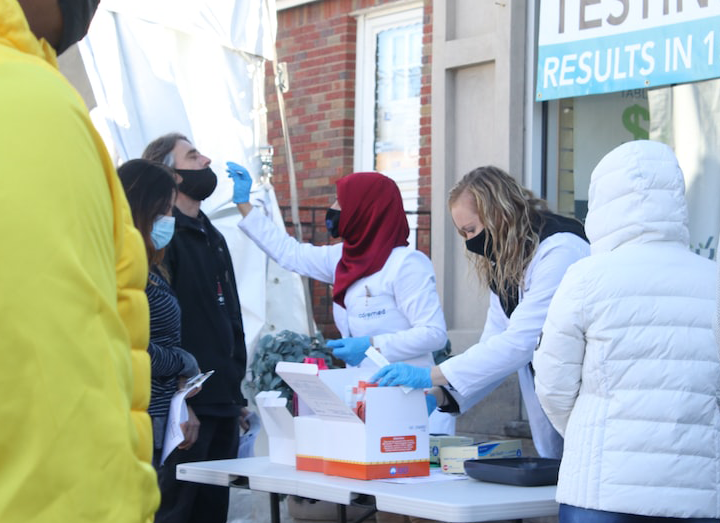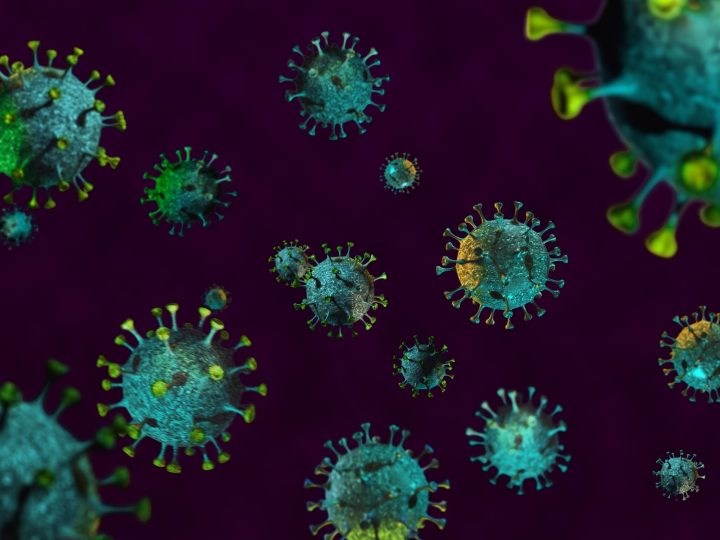Hand-foot-and-mouth Disease in Children: Symptoms, Causes & Diagnosis
Hand-Foot-and-Mouth Disease (HFMD) is an infectious disease that usually occurs in children under 5 years old. Most infected children have mild symptoms lasting 7 to 10 days. HFMD is usually self-limited, but some infected children may develop severe complications such as meningitis, encephalitis, and myocarditis. The disease is highly contagious and can spread rapidly in schools and daycare centers.
In recent years, sporadic cases have resulted in HFMD outbreaks over the world. Most HFMD outbreaks and deaths were reported from Asia-Pacific, including Malaysia, Vietnam, China, Cambodia, and India. In addition, the viruses that cause several complications of HFMD are mainly CoxA16 and EV71, leading to increased neurological complications and mortality. In this article, we discuss the main symptoms and causes of transmission of HFMD in children, and introduce molecular testing to diagnose HFMD.

The main symptoms of HFMD in children
The clinical manifestations of HFMD are complex and diverse. Most patients have mild symptoms, including fever, mouth ulcer, and rash. However, severe manifestations may progress rapidly and lead to children’s death.
– Rash
Children with HFMD may present with maculopapular or herpetic rashes on the hands, feet, mouth, and buttocks, which may be macular, papular, or vesicular. The rash is nonpruritic and painless. The size of the rash is approximately 2 mm to 6 mm.
– Fever
Children usually develop fever and other flu-like symptoms 3 to 5 days after being infected with the HFMD virus. Other symptoms may include loss of appetite, vomiting, sore throat, and more. In addition, children with mild HFMD infection will have a low-grade fever, and severe HFMD can develop a high fever and cause serious complications.
– Mouth ulcer
The most common symptoms of HFMD are usually mouth ulcers and sore throat. Children may develop painful oral blisters 1 to 2 days after a fever. The blisters are surrounded by a thin layer of erythema, which eventually ruptures and forms a superficial ulcer with a grayish-yellow base and an erythematous border.
– Central nervous system damage
Central nervous system damage may occur in a small number of HFMD cases, and the general course of the disease is within 1 to 5 days. The manifestations are headache, vomiting, limb shaking, muscle weakness, and more. There may also be symptoms similar to meningitis and polio-like syndrome.
– Cardiopulmonary failure
Critically ill patients with severe cases of HFMD may have a rapid heartbeat, shortness of breath, and hemoptysis. In severe cases, the blood pressure may drop, or there will be a shock, which will be life-threatening.
The main cause of HFMD transmission in children
HFMD is extremely contagious, and the transmission route is complicated. The main transmission routes include direct contact, droplet, and digestive tract transmission.
1. Direct contact transmission: Contact with patients infected with HFMD or other close contacts with them, such as kissing, hugging, or sharing tableware. Or get infected by touching objects and surfaces that have the virus on them, such as doorknobs or toys, and then touching back to the eyes, nose, or mouth. These direct contacts have the potential to cause HFMD.
2. Droplet transmission: Respiratory droplets containing HFMD virus particles will be spread in the air when the nose and throat secretions of infected people cough or sneeze. Children could become infected if they are exposed to droplets containing the virus.
3. Digestive tract transmission: HFMD can be transmitted by eating untreated or polluted water and food. Or touching the feces of an infected person, such as changing a diaper, can also cause HFMD infection.
Molecular tests for diagnosis of HFMD
Molecular testing refers to using reverse transcription polymerase chain reaction (RT-PCR) to detect the virus’s genetic material. Molecular tests can help plan treatment, determine whether a treatment is working, and predict a patient’s outlook. Additionally, the rapid development of molecular biology provides a reliable technical means for detecting pathogens.
Diagnosis of HFMD is usually made using clinical diagnostic methods. Furthermore, RT-PCR can also be used for laboratory testing. For example, nasopharyngeal swabs can be used to detect airway secretions, positive results for virus-specific nucleic acids such as CoxA16 and EV71 in herpes fluid or feces, or the isolation of enteroviruses to diagnose the disease.
Using RT-PCR as a method of diagnosing HFMD offers several potential advantages. The main advantage is that the detection sensitivity is improved, and the RT-PCR is easy to operate and avoids cross-contamination. Another important advantage is that RT-PCR can quickly and accurately distinguish CoxA16 and EV17, so patients can prevent HFMD as early as possible and reduce the occurrence of severe diseases.

Sansure: S3053E EV/EV71/CA16 – Enterovirus/Coxsackievirus A16/Enterovirus 71 RNA Diagnostic Kit
Hand-Foot-and-Mouth disease is a common disease in children caused by an enterovirus. Early diagnosis is especially important for the timely treatment and improvement of the prognosis of children with HFMD. In this regard, Sansure Biotech Inc. has developed an RNA diagnostic kit for the diagnosis of HFMD. S3053E EV/EV71/CA16 -Enterovirus/Coxsackievirus A16/Enterovirus 71 RNA Diagnostic Kit is a PCR technology detection product. This product uses advanced magnetic bead technology to help patients detect Enterovirus, Coxsackievirus A16, and Enterovirus 71. The product has high sensitivity and specificity and can help patients get accurate test results faster.
Contact us for more information on Hand-Foot-Mouth Disease and our product!
Reference
[1] Hand, Foot, and Mouth Disease (HFMD)
Available at: https://www.cdc.gov/hand-foot-mouth/about/transmission.html
[2] Hand, foot and mouth disease (HFMD): emerging epidemiology and the need for a vaccine strategy
Available at: https://link.springer.com/article/10.1007/s00430-016-0465-y
[3] Enterovirus surveillance guidelines
Available at:https://www.euro.who.int/data/assets/pdf_file/0020/272810/EnterovirusSurveillanceGuidelines.pdf
[4] Hand, Foot and Mouth Disease
Availble at: https://www.who.int/westernpacific/emergencies/surveillance/archives/hand-foot-and-mouth-disease





